Norfolk Coastal Walks
Circular walks and best coastal walks in Norfolk
Beautiful Norfolk Coastal Walks
The Cliffs of Old Hunstanton
Take a short detour down to the beach to see the stunning red and white stripey cliffs at Hunstanton. White chalk forms the top white layer and red chalk sits below. NWT Holme Dunes holds a variety of important habitats including sand dunes, salt marsh, pine woods and grazing marshes. These hold lots of wildlife species including toads, butterflies and dragonflies, as well as a large number of interesting plants. Various military remains from WWII can also be sighted around the reserve. RSPB Titchwell offers fantastic opportunities to see wildlife all year round. Spacious hides give sheltered views of different habitats or sit on a bench to enjoy the reed beds and lagoons. Take a walk down the west bank, to the beach, for elevated views across the reserve.
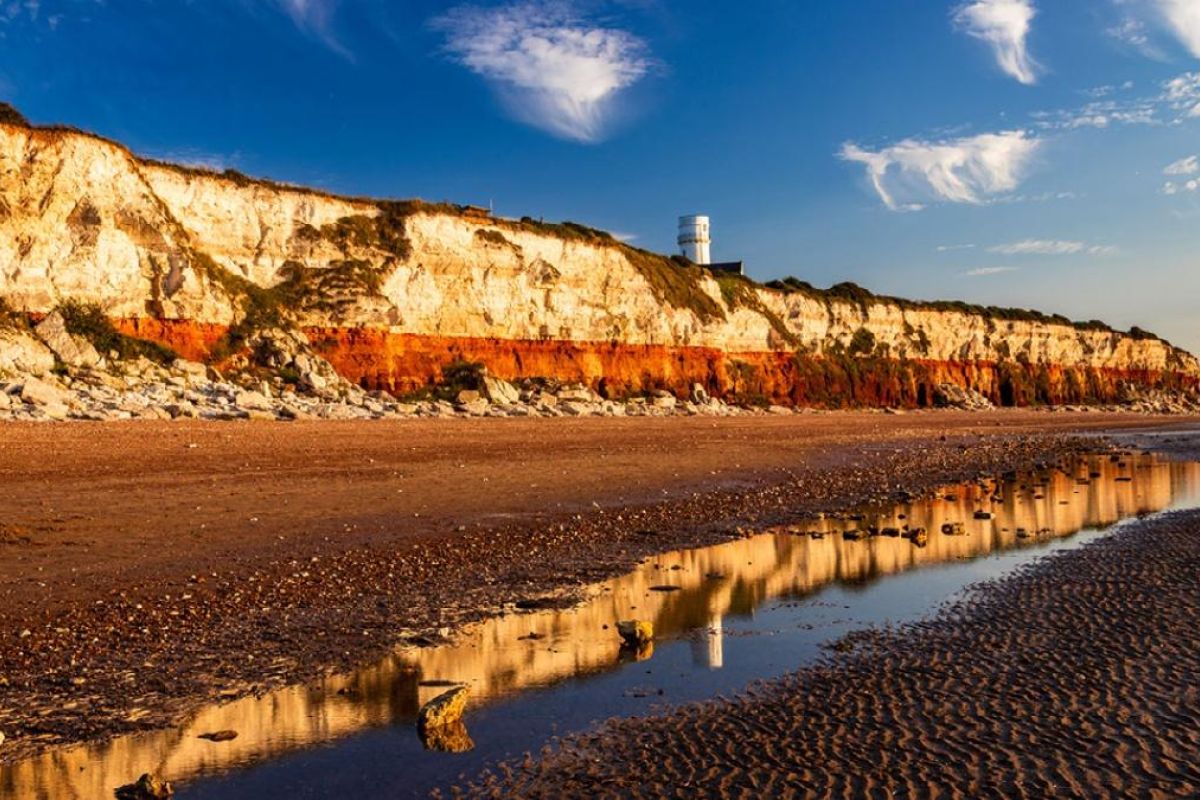
Along The Norfolk Coast Path and Peddars Way
A walk along the Peddars Way and Norfolk Coast Path National Trail is the perfect way to lose yourself in this magical land of sand dunes and salt marsh, sea air and warm welcomes. these routes through woodland and coastal paths have a different character altogether. Rich in history and steeped in ancient legend, the trail traverses the very best landscapes Norfolk has to offer. Peddars Way offers a wonderfully remote-feeling adventure just waiting for you to throw your rucksack over your shoulder or jump on your bike. The Trail offers something for everyone, from a gentle stroll to a 129.5 mile (208Km) walk. The National Trail combines two long-distance walking trails; Peddars Way and the Norfolk Coast Path. The route starts in Suffolk at Knettishall Heath Country Park (or Thetford Station for Cyclists) and follows the route of a Roman road to Holme-next-the-Sea on the north Norfolk coast. The Peddars Way meets the Norfolk Coast Path at Holme-next-the-Sea as it runs from Hunstanton to Hopton-on-Sea. And best of all, Hunstanton Camping & Glamping with mYminibreak is based right on the Peddars Way route! Meaning you can roll out of bed and straight into a day out steeped in history and beautiful coastal views!
For more information on the wonderful Peddars Way trail, and others in the local area, click HERE.
Wells-next-the-Sea - Marsh Views
The historic seaside resort of Wells-next-the-sea is a perfect place to stop for any hiker. It has been a port for 600 years, and is naturally protected by saltmarshes behind a sandbar. The extensive sandy beach is lined with colourful beach huts and pine woodlands that merge with Holkham beach a short way along the coast. Admire the views between Wells’ beach and the quayside along a mile long raised bank, or relax by taking the funminiature train. The old granary and malting buildings on the quayside reflect past industries associated with the port. The most distinctive building, with its overhanging gantry, was built in 1903. Many visitors enjoy visiting the quayside for a spot of crabbing too - and there are plenty of shops nearby where you can buy your crabbing lines, nets, buckets & bait! (Did you know they LOVE smoky bacon?)
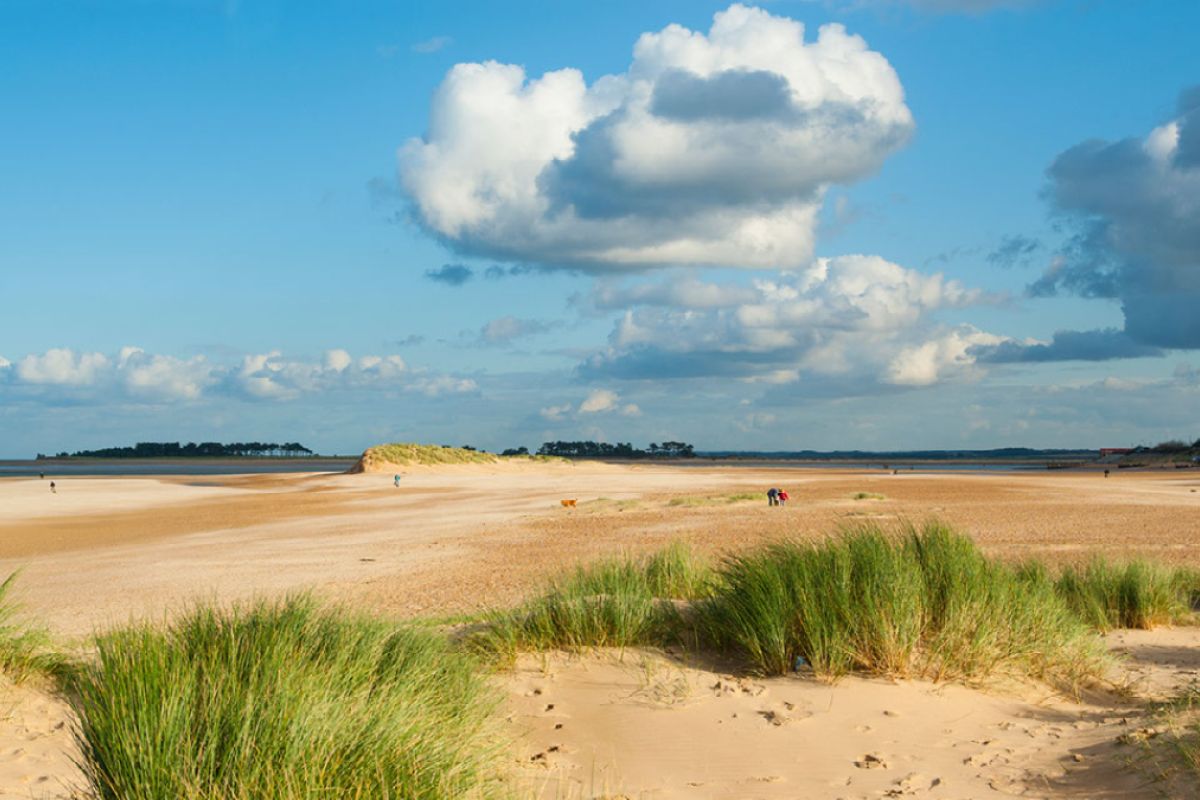
Morston Quay
Morston Quay falls within the Blakeney National Nature Reserve, and is based just within the shelter of Blakeney Point. The Point is a 4 mile long shingle spit with sand dunes that is home to a variety of unusual plants and an important breeding ground for sea bird colonies. Grey and common seals are also in abundance here. The National Trust Visitor Centre is a fantastic way to learn about the wildlife, conservation work and history of the Nature Reserve, whilst the observation tower offers wonderful views over Blakeney Point and the surrounding marshes. Several local businesses offer seal trips from the quay to Blakeney Point, a great way to get close to these beautiful mammals!
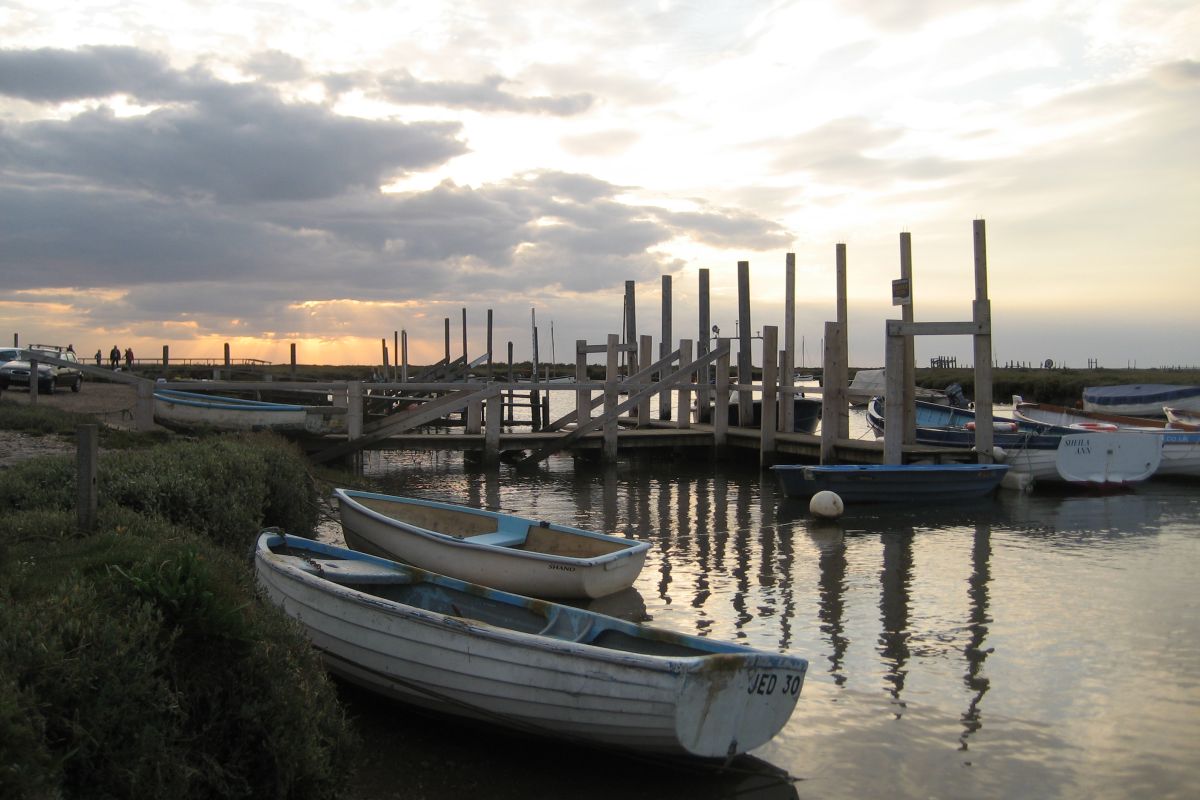
Blakeney Point
The stunning coastal village of Blakeney is set on a hill that leads down to the quay and harbour. Brimming with flint cottages typical of this part of Norfolk, in medieval times Blakeney was a busy port, until the estuary began to silt up which prevented large ships from entering the harbour. It’s the perfect place to stop for a rest, have an ice cream or a cup of coffee and watch the popular hobby of crab catching on the quayside. Just off the quay is the 15th century Guildhall, the remains of the house of a prosperous Blakeney merchant, which has an impressive brick-vaulted undercroft.
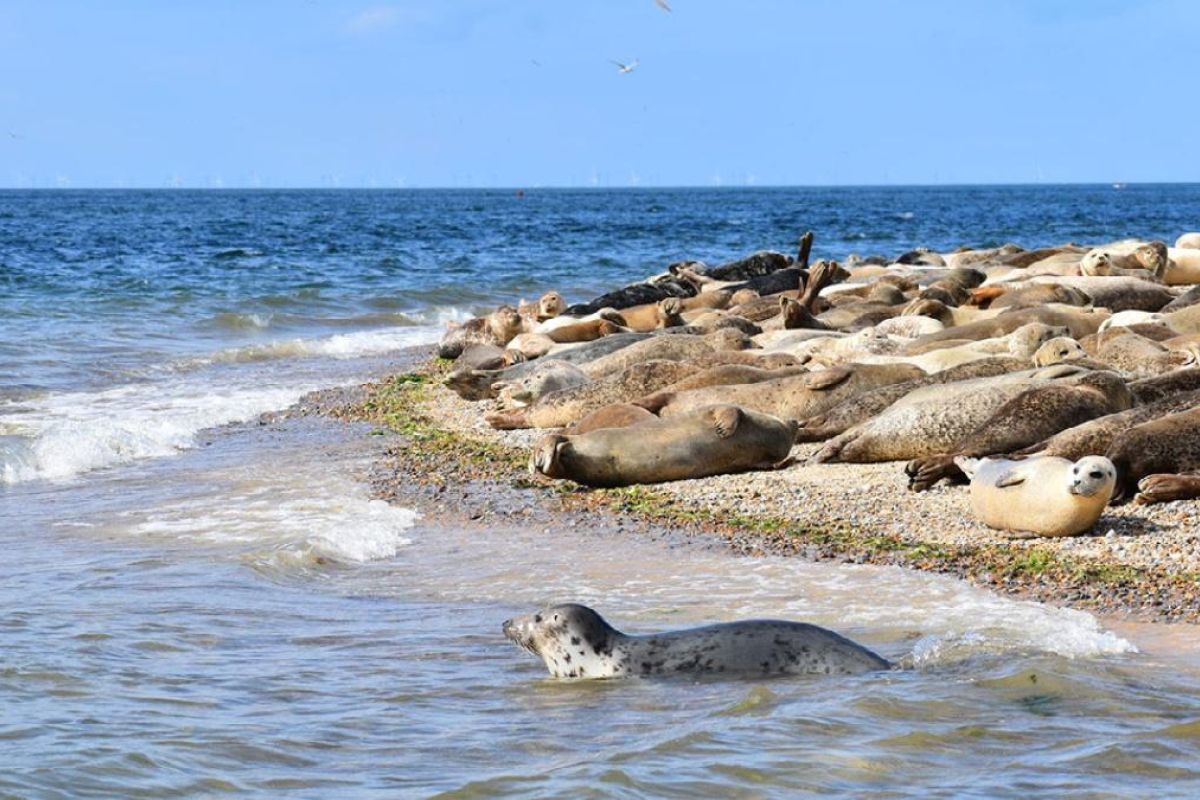
Cley-next-the-Sea
Once an important trading port, Cley next the Sea nowadays makes for a wonderful place for a walk. With paths through lush open fields running past streams and rivers, down to the beach. To the east of the village is Norfolk Wildlife Trust's Cley Marshes, the trust's oldest and most well-known nature reserve, with plenty of hides giving you opportunities for birdwatching along your route! The shingle beach and saline lagoons, as well as the grazing marsh and reed bed, support a huge number of wintering and migrating wildfowl and waders, as well as bittern, marsh harrier and bearded tit.
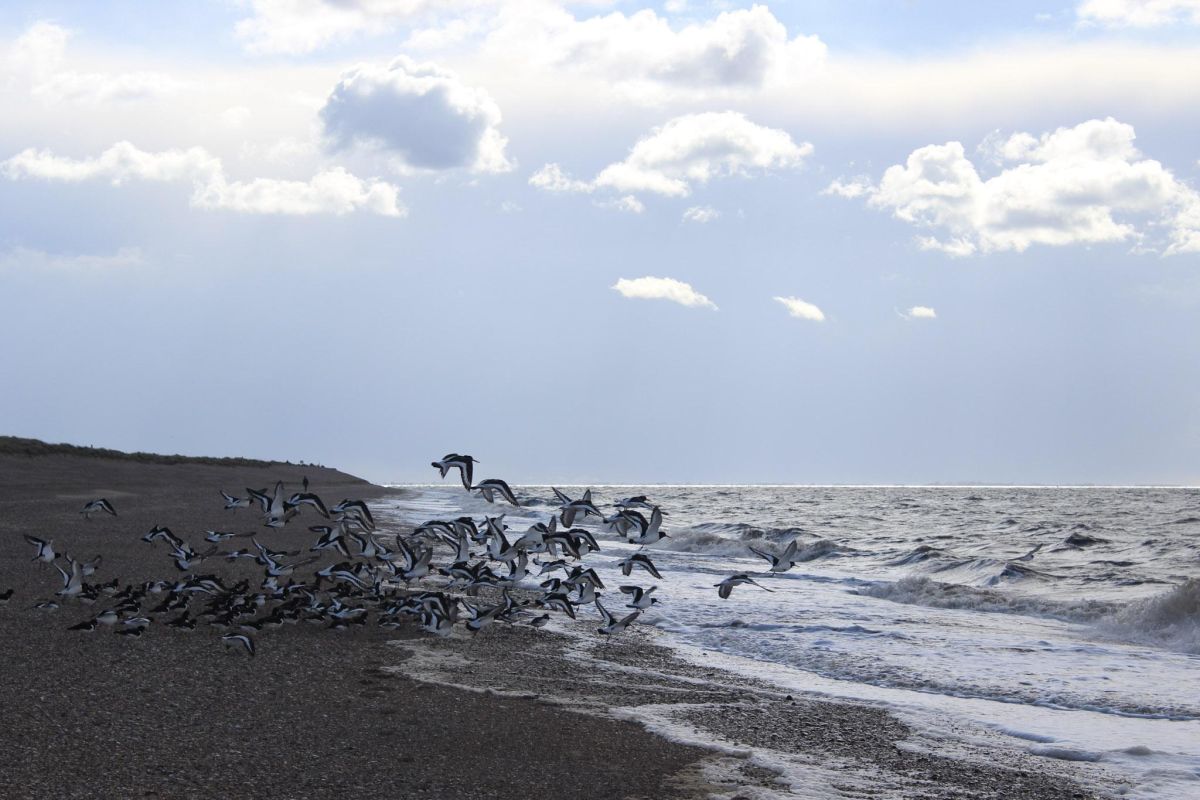
Weybourne
Weybourne Camp is a former anti-aircraft training camp dating from before World War II. The camp is currently home to the Muckleburgh Collection, a military museum with 25 tanks (in working order!) The shingle beach at Weybourne Hope has long been considered a vulnerable spot for invasion. Marauding Danes came ashore here in the 9th and 10th centuries and defences were built as prevention against invasion by Spain in the 16th century. Further anti-invasion defences were constructed here during World War II, which explains the large number of concrete pillboxes that can still be seen along this stretch of coastline. Behind the beach is Weybourne Cliffs, a designated Site of Special Scientific Interest, important for its geology. The remains of a wide variety of marine molluscs have been found here along with both small and large animal fossils. The cliff face is also used as a nest site for sand martins.
West Runton
West Runton Cliffs is a Site of Special Scientific Interest that is of international importance for vertebrate fossils. The famous West Runton Mammoth, an extinct species twice the weight of an African elephant, was discovered here in 1990 after a storm that revealed a huge pelvic bone. More of the skeleton was recovered during excavations in 1992 and 1995, and a sample of fossil bones from the elephant can be seen in Cromer Museum and in the Castle Museum, Norwich. In January 2015, close to the elephant site, further erosion of the cliffs revealed part of a pre-historic rhinoceros skull, discovered by an amateur collector.
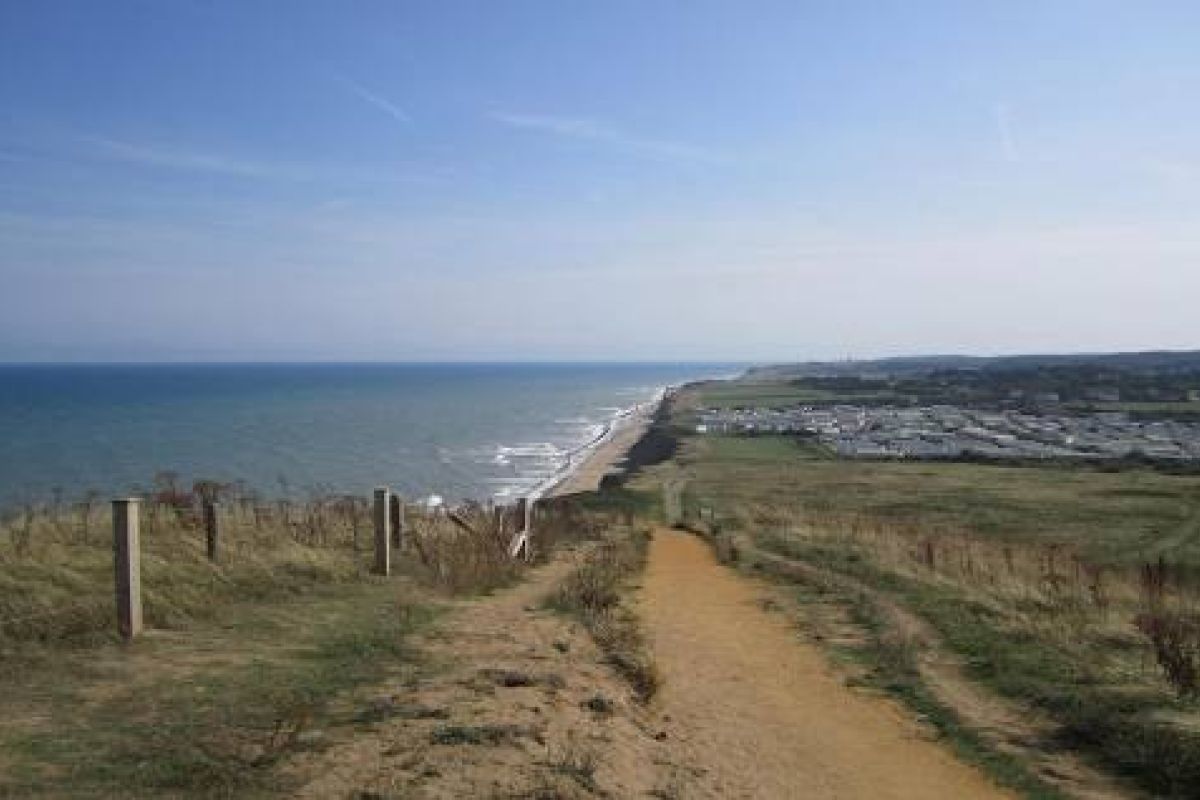
Cromer Lighthouse
Cromer became an important seaside resort in the late 19th century when the railway first arrived. The town has long been associated with crab fishing and Cromer crabs are still highly regarded. The church of St Peter and St Paul in the town has the tallest church tower in the county. Next to the church is Cromer Museum where you can learn all about the fascinating history of the area. The museum includes a fossil display, a cosy Victorian fisherman’s cottage and the ‘Old Cromer’ gallery with displays of historic photographs and illustrations. There is also a nationally important collection of photographs by pioneering North Norfolk photographer Olive Edis. Cromer Pier built at the beginning of the 20th century houses both the offshore lifeboat station and the end-of-the-pier Pavilion Theatre. The elegant 19th-century Hotel de Paris on the promenade just above the pier was designed by Norwich architect, George Skipper.
Brancaster Staithe
While along the Norfolk Coast Path's trail, Brancaster Staithe itself has routes, offering North Norfolk coastal walks alongside marshland and through beautiful fields with a few circular walks in the area that also go through Burnham Deepdale. Walk the circular route around Brancaster Staithe and enjoy the wide open fields, or stop off in the village for a bite to eat at one of the pubs!
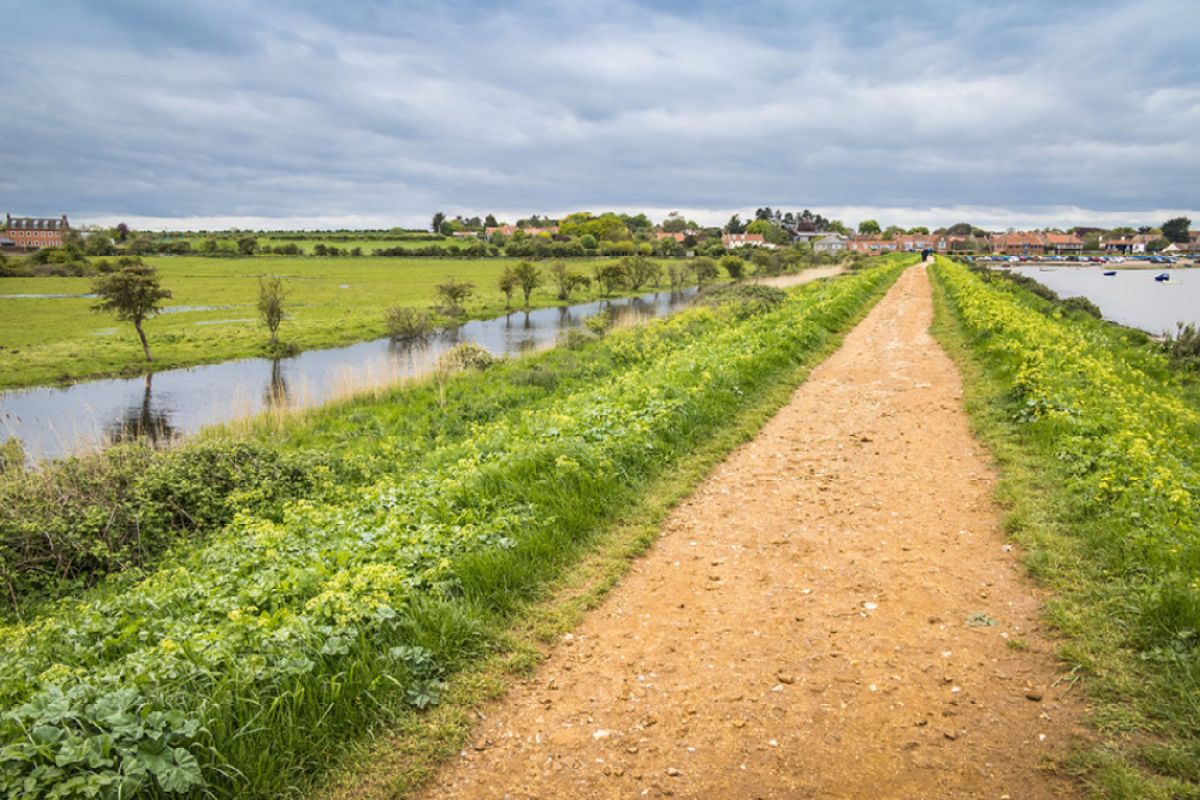
Sheringham Circular Walk
A 6 mile route starting from the wonderful seaside town of Sheringham. This circular walk takes you on a clifftop path along the Norfolk coast Area of Outstanding Natural Beauty. The gorgeous views and the route that goes from the beach to the cliff top and back again makes this one of the best coastal walks in Norfolk.
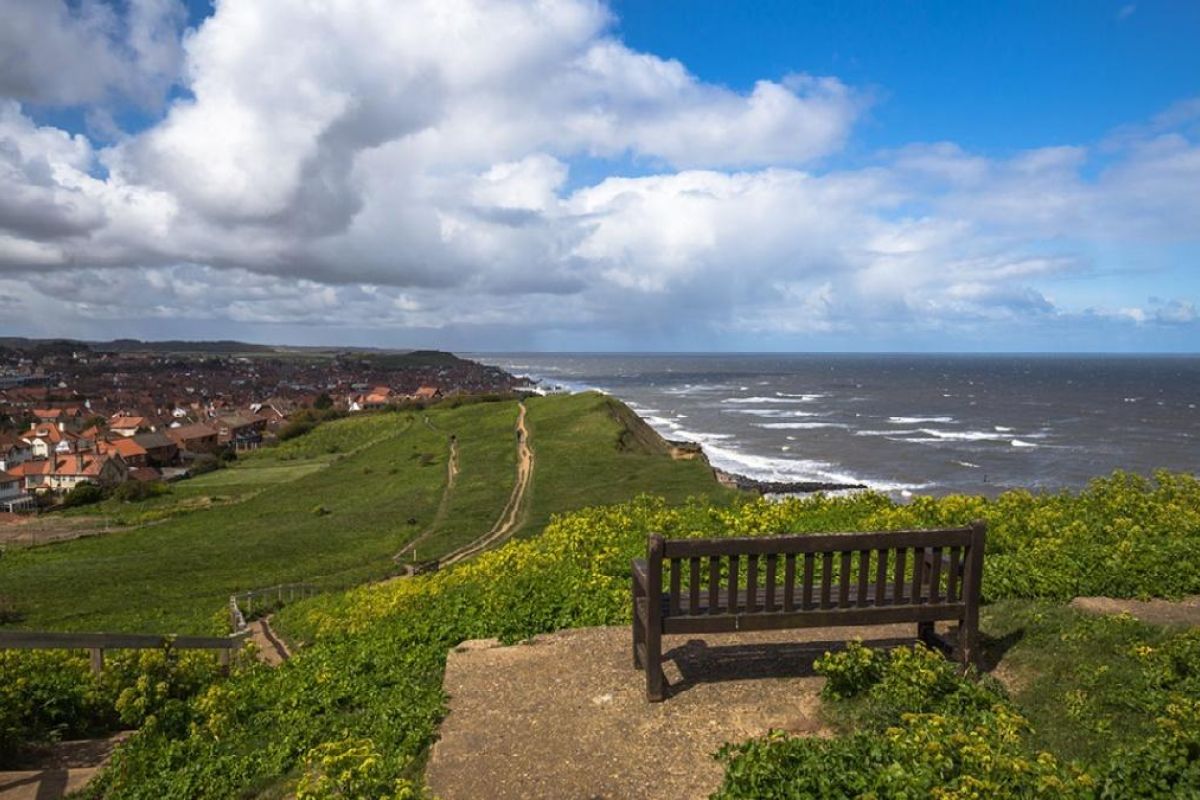
Thornham Walks
Closeby to the Holme Dunes National Nature Reserve is Thornham, a small village and one with plenty of walks. You can wander over to some of the landmarks at Thornham, or just explore the marshes north of the village. Once you're all walked out for the day, you can return to one of the many cafes and restaurants dotted throughout the village, like Thornham Deli or, if you want dinner, Eric's Fish & Chips!
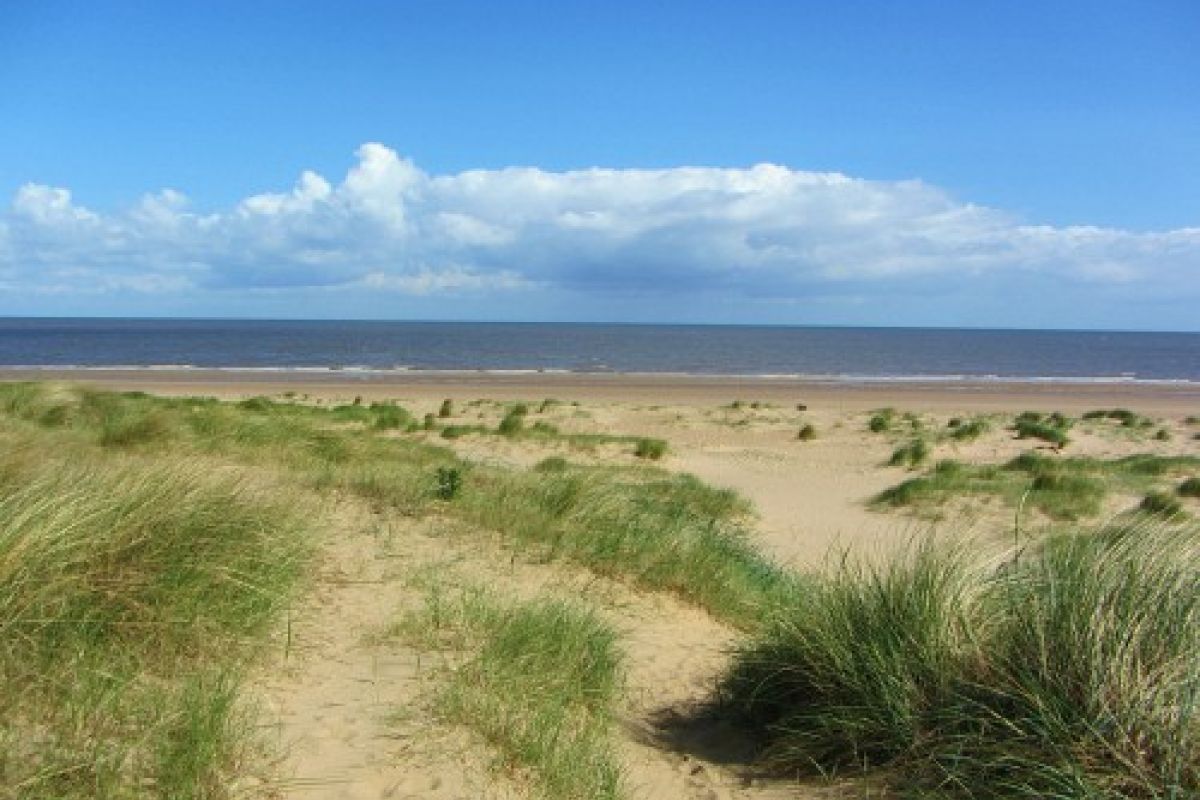
Need help carrying your bags?
Want to hike a long route, but don't want to have to lug around all your gear between each stop?
HikeHelp is a baggage transfer service that operates in Norfolk and offers an option to bring your baggage to each place you plan to stop. Simply plan your route, book your accommodation, and then let HikeHelp know where you've booked to stay so that they can ferry your gear to your next stop, so it'll be ready and waiting for you when you get there! This lets you walk without a huge weight on your shoulders so you can concentrate on your surroundings and the beautiful trail you're walking!
